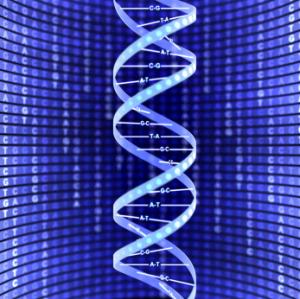by
Brendon Nafziger, DOTmed News Associate Editor | April 06, 2010

Researchers are unlocking
the genetic mutations
that cause cancer
Scientists have figured out a way to protect mice from the consequences of a gene mutation linked to breast and ovarian cancers in women, raising hopes medicine can cut cancer risk from the mutant genes in humans, too.
In the study appearing in the current issue of Cell, the researchers found that by deleting a protein, they could restore a critical DNA repair process, thereby dramatically reducing the risk for cancer in mice with the defective gene.
The gene, BRCA1, is one of two linked to deadly and hard-to-treat breast and ovarian cancers. According to the National Cancer Institute, six out of ten women who carry the mixed-up version of the gene will get breast cancer, making them five times more likely to come down with the disease than other women.



Ad Statistics
Times Displayed: 78095
Times Visited: 2768 Ampronix, a Top Master Distributor for Sony Medical, provides Sales, Service & Exchanges for Sony Surgical Displays, Printers, & More. Rely on Us for Expert Support Tailored to Your Needs. Email info@ampronix.com or Call 949-273-8000 for Premier Pricing.
"In BRCA1 cells, the most important defect seems to be the inability to repair DNA breaks," Andre Nussenzweig, lead author of the study and a researcher at the Experimental Immunology Branch, National Cancer Institute, tells DOTmed News. "If you could overcome that defect, you'd have a cure for that risk."
Repairing errors
During DNA replication, the DNA strands sometimes snap. To fix the DNA, the body relies on a process known as homologous recombination. In this, the broken DNA borrows material from a neighboring (or sister) strand to fix the break. But with the BRCA1 mutation, this favored pathway can fail.
Instead, another, less efficient pathway takes over to fix the botched DNA replication. This one, called the non-homologous end-joining (NHEJ), works by gluing broken ends of the DNA back together.
"Normally, it's not toxic," says Nussenzweig. "And it's critical for the immune system," where it helps create immune cells to fight infection.
But it's not very good at fixing DNA replication errors. And its shoddy repairs over time lead to chromosome aberrations, which in turn lead to genomic instability -- fertile grounds for tumor growth.
In their study, Nussenzweig and his colleagues found that could shut off NHEJ and let the more efficient HR pathway resume its work. And they did this by canceling out a protein called 53BP1.
Knocking out the protein
What appears to be happening is that the two repair pathways compete over the same resource, a protein called ATM. In normal mice with functioning BRCA1 genes, the HR pathway is able to somehow deactivate 53BP1 on its own, letting it use ATM to do the repair work. But in mice with the mutant, broken BRCA1 gene, the NHEJ pathway, thanks to the 53BP1 protein, is able to somehow start working first, taking up all the ATM.

